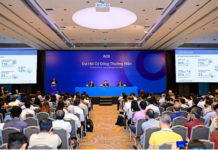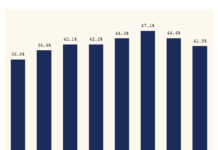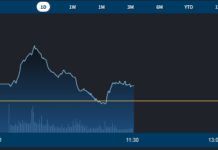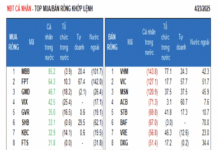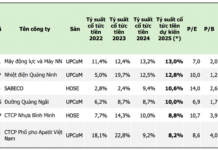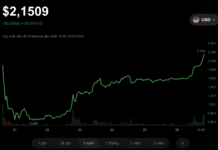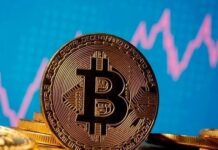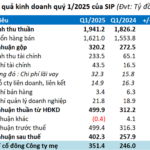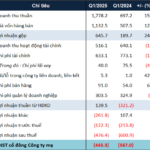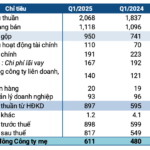At the Vietnam Industrial Property Forum (VIPF 2024) held in the afternoon of July 30, Mr. Vu Van Chung, Deputy Director of the Foreign Investment Agency, Ministry of Planning and Investment, expressed an optimistic view about the industrial real estate market in the coming time.
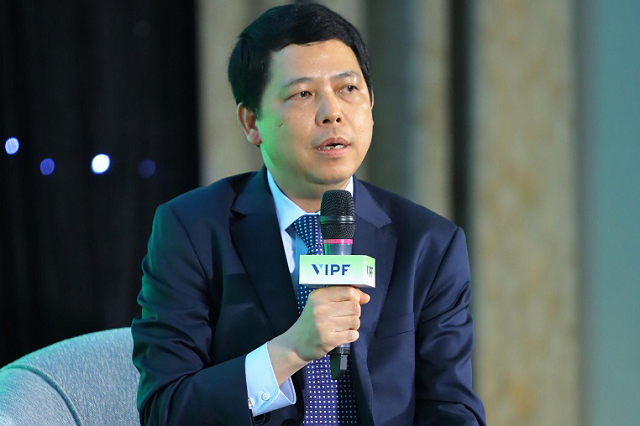
Mr. Vu Van Chung, Deputy Director of the Foreign Investment Agency, Ministry of Planning and Investment. Photo: BTC
|
According to Mr. Chung, many investors and large corporations have shifted their focus to the fields of processing and manufacturing, including new products such as high technology, semiconductors, and artificial intelligence in Asian countries, especially in the Asia-Pacific region. Vietnam is considered a very attractive country for investment.
Some people believe that this is a once-in-a-century opportunity for Vietnam to take advantage of the opportunity to attract high-quality investment and also a basis for the development of industrial real estate in the coming time.
From the perspective of state management, Mr. Chung said that Vietnam has many competitive advantages. First of all, it is political stability; secondly, the Vietnamese economy has maintained a stable growth rate over the years.
Third, in terms of human resources, Vietnam has a population of about 100 million people, of which 57-59 million people are of working age and are being trained and supplemented with knowledge. Instead of attracting investment with cheap labor costs in the past, Vietnam now has a high-quality workforce.
Fourth, Vietnam has deeply integrated with the world’s economies.
Fifth, the government is focusing on implementing strategic breakthroughs in developing infrastructure in the fields of roads, sea, and air, and in the future, railways, creating a large space for economic development and investment attraction. In addition, the government’s determination in reforming institutions and regulations to promote the market is also a plus point.
Mr. Chung also informed that, for new industries such as semiconductors, artificial intelligence, and high technology, the government has established task forces to directly guide and promote investment attraction. The goal is to train about 50,000 engineers, and by 2030, there will be 100,000 workers in the semiconductor industry.
“Currently, Vietnam is in a phase of selectively attracting high-quality FDI, so this will be a challenge for industrial park management boards and suppliers because the quality of investors’ goods will be improved,” Mr. Chung said.
Talking about the rental price of industrial parks, Mr. Chung emphasized the need to be cautious because if the price continues to increase, Vietnam’s competitiveness will face difficulties. Therefore, it is necessary to ensure a balance and competitive price for investors to rent in the region.
In addition, to maintain investment attraction, Mr. Chung also proposed solutions, first of all, Vietnam’s trend is shifting from attracting to cooperating with foreign investors. This shows that the two sides cooperate in investment, develop together, and enjoy the fruits together.
Secondly, it is necessary to advise the government to build mechanisms and policies to support the attraction of selective foreign investors.
Sharing the same view, Mr. Truong An Duong, North Regional Director and Head of Residential Real Estate, Frasers Property Vietnam, said that although Vietnam has a lot of potential in industrial real estate, it must be considered in the context of global competition.
The rapid increase in land prices every year, from 6-8% in the past time, is one of the factors that reduce Vietnam’s competitiveness compared to other countries. In some cases, the land price in Vietnam’s industrial parks is even higher than in other regions. Therefore, many foreign investors will compare prices and make choices.
“Vietnam has a strength of 100 million people, a large consumer market. In addition, the potential in terms of human resources with training programs, promoting production energy and labor force is Vietnam’s opportunity in the international market competition”, emphasized Mr. Duong.
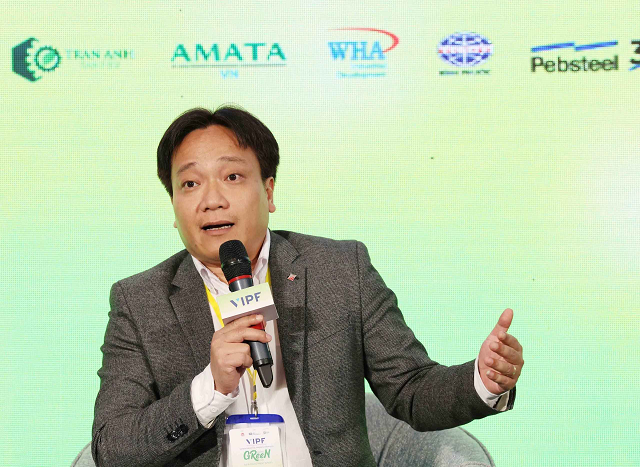
Mr. Truong An Duong, North Regional Director and Head of Residential Real Estate, Frasers Property Vietnam. Photo: BTC
|
Meanwhile, Mr. Dinh Hoai Nam, National Sales Director of SLP Vietnam, believes that Vietnam will remain a bright spot in the market, at least in the Asia-Pacific region, for many years to come. The representative of SLP also stated that industrial parks will compete in depth in terms of quality instead of price.
The need for a faster green transition
Regarding the issue of greening, Ms. Trang Le, Senior Director of Research and Consulting, JLL Vietnam, said that as electronics and textiles continue to be the two main industries, there is no reason to stop promoting these sectors. However, the production process needs to be greened, along with expanding into other industries.
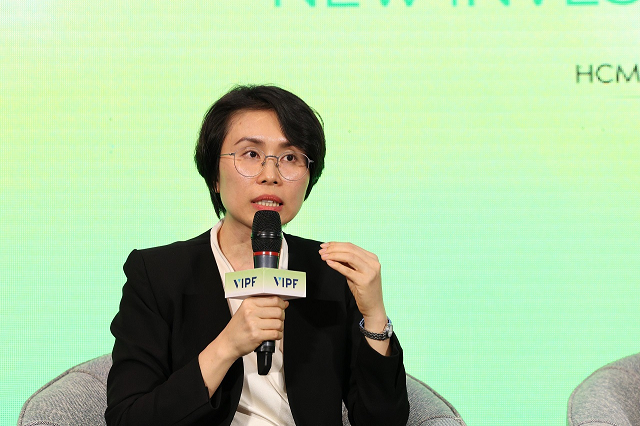 Ms. Trang Le, Senior Director of Research and Consulting, JLL Vietnam. Photo: BTC
|
According to Ms. Trang Le, Vietnam is currently at a turning point, and if it does not act more decisively in greening, improving legal procedures, and streamlining processes, its current position will not last long. Other countries in the region are already pushing forward with this.
“We need to act faster in every way to ensure our position; otherwise, it will be too late,” said Ms. Trang Le.
If given a choice, Ms. Trang Le said that greening is a must, along with guidance from the public sector through circulars and procedures to speed up the process because this is a pivotal year for change.
Regarding difficulties, the representative of JLL said that Vietnam is in the first phase of piloting the eco-industrial park model. There are two main challenges: first, there are not many clear and attractive financial incentives to support investors in the green transition; second, there is a lack of detailed guidelines on implementing the green transition.
Will the warehouse and factory segment be “hot”?
According to Mr. Dinh Hoai Nam, the most prospective segment now is the warehouse and factory for lease, which will boom in the next few years. In addition, some new product types are being born, such as building higher floors for these segments to optimize the project.
“There will be a wave of two-story warehouses and factories, and the market is already receiving and absorbing this product quite well,” said Mr. Nam.
Secondly, the development of build-to-suit products instead of ready-built ones will also be promising in the future.
 Mr. Dinh Hoai Nam, National Sales Director, SLP Vietnam. Photo: BTC
|
Mr. Hardy Diec, General Director of KCN Vietnam, said that ready-built factories and warehouses are currently the company’s key products.
The director of KCN Vietnam added that Vietnam is currently in the crosshairs of multinational companies that want to invest but are still concerned about procedures and legal issues.
Which localities have the potential to develop industrial parks in the future?
According to Mr. Truong An Duong, localities with good connectivity in terms of roads, airports, and seaports in the North are the areas around Hanoi, such as Bac Ninh, Bac Giang, Hai Phong, and Hung Yen. In the South, localities near Ho Chi Minh City, such as Binh Duong, Long An, Dong Nai, and Ba Ria-Vung Tau, will attract new-generation FDI and pioneer green industrial parks.
However, the land fund in these areas near the center is limited. Therefore, to solve this problem, Mr. Dinh Hoai Nam said that each locality must proactively connect the infrastructure to create a new economic axis for industrial development. When industrial park developers see the potential for investment, they will come.






